Chemistry I Module of the MCAT Self Prep eCourse: Lesson 12: Gibbs Free Energy (Pro)
1/49
There's no tags or description
Looks like no tags are added yet.
Name | Mastery | Learn | Test | Matching | Spaced |
|---|
No study sessions yet.
50 Terms
Lesson 12: Gibbs Free Energy
Lesson 12: Gibbs Free Energy
What is the thermodynamic quantity that combines enthalpy and entropy? What is its units?
Gibbs free energy (ΔG) is the thermodynamic quantity that combines enthalpy and entropy. Its units are typically kJ/mol.
Why is Gibbs free energy being a state function important in calculating ΔG and if a series of reactions is favorable?
Gibbs free energy being a state function means that ΔG values for different reactions can be added together to see if the overall reaction is favorable or not. It allows for coupling of reactions.
What equation relates entropy and enthalpy to determine if a reaction is spontaneous or not?
ΔG = ΔH - TΔS
ΔG = Change in Gibb's free energy
ΔH = Change in enthalpy
T = Temperature
ΔS = Change in entropy
Struggling to keep your MCAT equations straight? Simply conquer the 100 most important equations using Andrew's 100 Most Essential Equations Mastery Course @ https://mcatselfprep.com/course/andrews-equation-mastery-course/
Would the formation of the product be favored or not if the ΔG value is positive?
The formation of the product would not be favored if delta G is positive. A positive ΔG means the reaction would require huge amounts of energy to form the product.
The ΔG value for the formation of gaseous water at 25°C and 1.0 atm is −228 kJ/mol. The formation of gaseous water at these conditions is:
(A) Spontaneous
(B) Nonspontaneous
(C) At equilibrium
(D) Not possible
(A) Spontaneous
The formation of gaseous water at these conditions is spontaneous because ΔG is negative.
Calculate Gibb's free energy for a reaction in which the overall change in entropy is -24.3 kJ and the overall change in enthalpy is -2354.98 kJ (at a Temperature of 25°C)?
(A) 9,596.38
(B) 4,886.42
(C) -4,886.42
(D) -9,596.38
(B) 4,886.42
ΔG = ΔH - TΔS
ΔG = -2354.98 - (298K ⋅ -24.3 kJ)
ΔG = -2354.98 - (approx. -7500 kJ (actual: -7,241.4))
ΔG = approx. 5,000 (actual: 4,886.42)
Need help with MCAT math? Become an MCAT math wizard using Andrew's High-speed Math Mastery Course @ https://mcatselfprep.com/course/andrews-high-speed-math-mastery-course/
Suppose that a reaction has ΔH= -77 kJ/mol and ΔS= -0.48 kJ/(K * mol). At what temperature will it change from spontaneous to non-spontaneous?
(A) 47 K
(B) 160 K
(C) 243 K
(D) 321 K
(B) 160 K
ΔG = ΔH - TΔS
0 = (-77) - T(-0.48)
77 = 0.48T
T = about 150K (actual 160.4K)
At 160 Kelvin, this reaction will change from spontaneous to non-spontaneous. Because this transition is when ΔG = 0, if we substitute in the equation that ΔG = 0, we could solve for T.
*Need help with MCAT math? Become an MCAT math wizard using my High-speed Math Mastery Course @ https://mcatselfprep.com/course/andrews-high-speed-math-mastery-course/
If the reaction quotient (Q) is greater than the equilibrium constant (K), what is true about the the value of Gibbs free energy?
The value of Gibbs free energy is greater than zero (or is a positive number) because if the reaction quotient (Q) is greater than the equilibrium constant (K), then the reaction has exceeded the equilibrium state.
If a reaction has a positive value for its enthalpy and a negative value for its entropy, what is true about the spontaneity of the reaction at a high temperature? At a low temperature?
The reaction is always non-spontaneous because it will result in a positive Gibbs free energy value (delta G).
If a reaction has a negative enthalpy and a positive entropy, what is true about the spontaneity of the reaction at a high temperature? At a low temperature?
The reaction is always spontaneous because it will result in a negative Gibbs free energy value (-ΔG).
If a reaction has a positive enthalpy and a positive entropy, what is true about the spontaneity of the reaction at a high temperature? At a low temperature?
If both enthalpy and entropy are positive, then the spontaneity of the reaction depends on the temperature.
If temperature is high, then it will result in a negative Gibbs free energy and thus a spontaneous reaction.
If the temperature is low, then it will result in a positive Gibbs free energy and thus a non-spontaneous reaction.
If a reaction has a negative enthalpy and a negative entropy, what is true about the spontaneity of the reaction at a high temperature? At a low temperature?
If both enthalpy and entropy are negative, then the spontaneity of the reaction will depend on the temperature.
If the temperature is high, then it will result in a positive Gibbs free energy and thus a non-spontaneous reaction.
If the temperature is low, then it will result in a negative Gibbs free energy and thus a spontaneous reaction.
The heat of a given reaction is called the change in:
(A) Enthalpy
(B) Entropy
(C) Free energy
(D) Temperature
(A) Enthalpy
The heat of a given reaction is called the change in enthalpy.
What is the difference between heat, temperature, and enthalpy?
Heat is the transfer of energy due to change in temperature.
Temperature is the measure of the average kinetic energy of molecules.
Enthalpy is referred to as the heat transfer from the perspective of the system during reactions.
What is the difference between exothermic reactions and endothermic reactions in terms of enthalpy?
Exothermic reactions have a ΔH < 0, which means that the reaction is releasing heat.
Endothermic reactions have a ΔH > 0, which means that the reaction is absorbing heat.
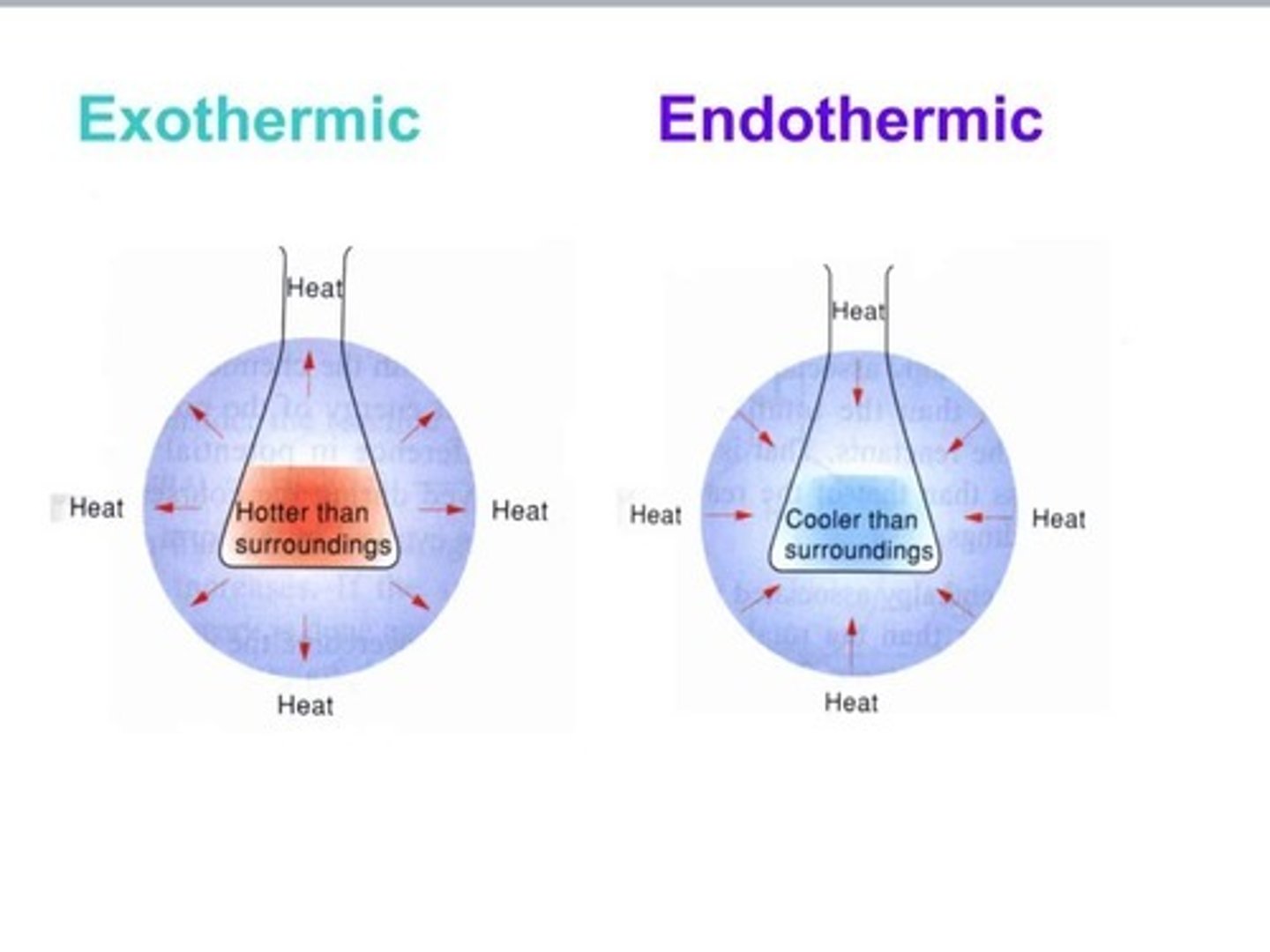
The change in enthalpy is the change in heat energy of a reaction. How is enthalpy calculated for a given reaction?
The change in enthalpy is essentially calculated by: (sum of heat content of products) - (sum of heat content of reactants).
If the reaction is endothermic, what is the sign of ΔH?
ΔH is positive for an endothermic reaction.
At what set of conditions do standard enthalpies occur?
(A) 25 degrees Celsius and 1.0 atm
(B) 100 degrees Celsius and 1.0 atm
(C) 25 degrees Celsius and 2.0 atm
(D) 25 degrees Celsius and 1.0 mmHg
(A) 25 degrees Celsius and 1.0 atm
Standard enthalpy occurs at 25 degrees Celcius and 1.0 atm.
CRB True or false? When looking up enthalpy values for a set of reaction species, the enthalpy depends on the concentration of the species.
True. The enthalpy depends on the concentration of the species.
If the ΔH of a reaction is negative, the reaction is:
(A) Endothermic
(B) Exothermic
(C) In equilibrium
(D) Endergonic
(B) Exothermic
If the ΔH of a reaction is negative, the reaction is exothermic.
When 1.0 mole of ZnO(s) decomposes, the ΔH = 348 kJ/mol of heat energy. This tells you that the formation of ZnO(s) is:
(A) Endothermic
(B) Exothermic
(C) In equilibrium
(D) Endergonic
(B) Exothermic
The FORMATION of ZnO(s) is exothermic because it is the reverse reaction of the decomposing.
What is the change in enthalpy for the following reaction: 2Mg + O2 -> 2MgO, if ΔH Mg = 0 kJ, ΔH O2 = 0 kJ, and ΔH MgO = -501 kJ/mol?
(A) 1,002 kJ
(B) 501 kJ
(C) -501 kJ
(D) -1,002 kJ
(D) -1,002 kJ
The change in enthalpy is:
(ΔH products) - (ΔH reactants)
Thus the answer is -1,002 kJ.
*Need help with MCAT math? Become an MCAT math wizard using my High-speed Math Mastery Course @ https://mcatselfprep.com/course/andrews-high-speed-math-mastery-course/
The formation of Nitrogen dioxide is a two step process:
N2 + O2 -> 2NO ΔH = 170 kJ
2NO + O2 -> 2(NO2) Δ H = -122 kJ
What is the change in enthalpy when creating 4 moles of nitrogen dioxide?
(A) 48 kJ/mol
(B) -48 kJ/mol
(C) 96 kJ/mol
(D) -96 kJ/mol
(C) 96 kJ/mol
Hess's Law states that a change in enthalpy for a total reaction can be calculated by summing the enthalpy changes for every step involved in the reaction:
170 + (-122) = 48 kJ
48 kJ is the total change in enthalpy for the reactions that produce only 2 moles of Nitrogen dioxide. Since the question asks for 4 moles of Nitrogen dioxide, the enthalpy must be doubled.
(48 kJ/ 2 mol NO2)* 2 = 96 kJ/ 4 mol NO2
Thus the answer is 96 kJ
*Need help with MCAT math? Become an MCAT math wizard using my High-speed Math Mastery Course @ https://mcatselfprep.com/course/andrews-high-speed-math-mastery-course/
CRB The laws of thermodynamics dictate transformations of energy from one form to another. Which law of thermodynamics states that the total amount of energy in the universe is constant?
(A) Zeroth law of thermodynamics
(B) First law of thermodynamics
(C) Second law of thermodynamics
(D) Third law of thermodynamics
(B) First law of thermodynamics
The first law of thermodynamics states that the total amount of energy in the universe is constant.
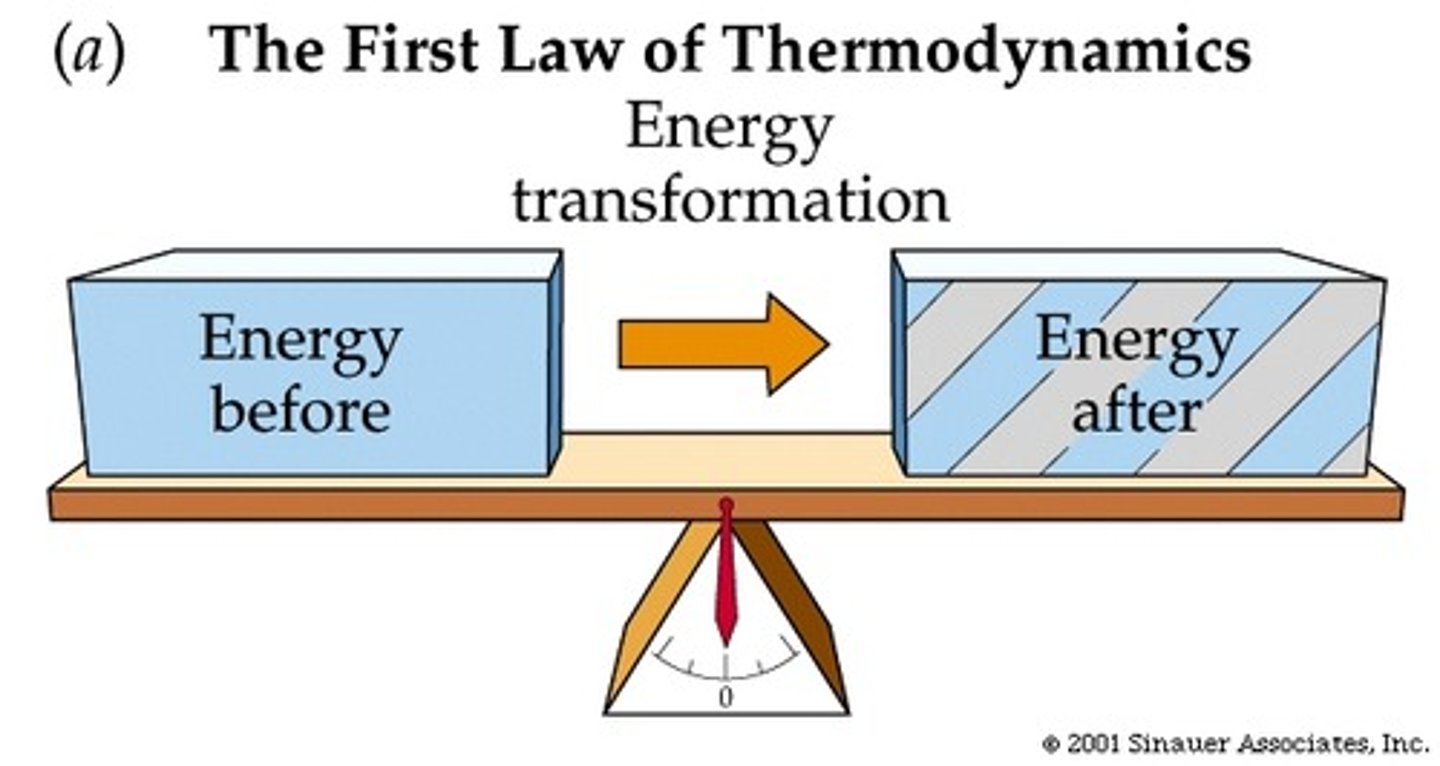
CRB The laws of thermodynamics dictate transformations of energy from one form to another. Which law of thermodynamics states that closed systems will always favor an increase in entropy?
(A) Zeroth law of thermodynamics
(B) First law of thermodynamics
(C) Second law of thermodynamics
(D) Third law of thermodynamics
(C) Second law of thermodynamics
The second law of thermodynamics states that systems will always favor an increase in entropy.

CRB The laws of thermodynamics dictate transformations of energy from one form to another. Which law of thermodynamics states that if two systems are in thermal equilibrium with a third system, then the first two systems are also in thermal equilibrium with each other?
(A) Zeroth law of thermodynamics
(B) First law of thermodynamics
(C) Second law of thermodynamics
(D) Third law of thermodynamics
(A) Zeroth law of thermodynamics
The Zeroth law of thermodynamics highlights the transitive property of thermal equilibrium, and is the basis of the concept of temperature.
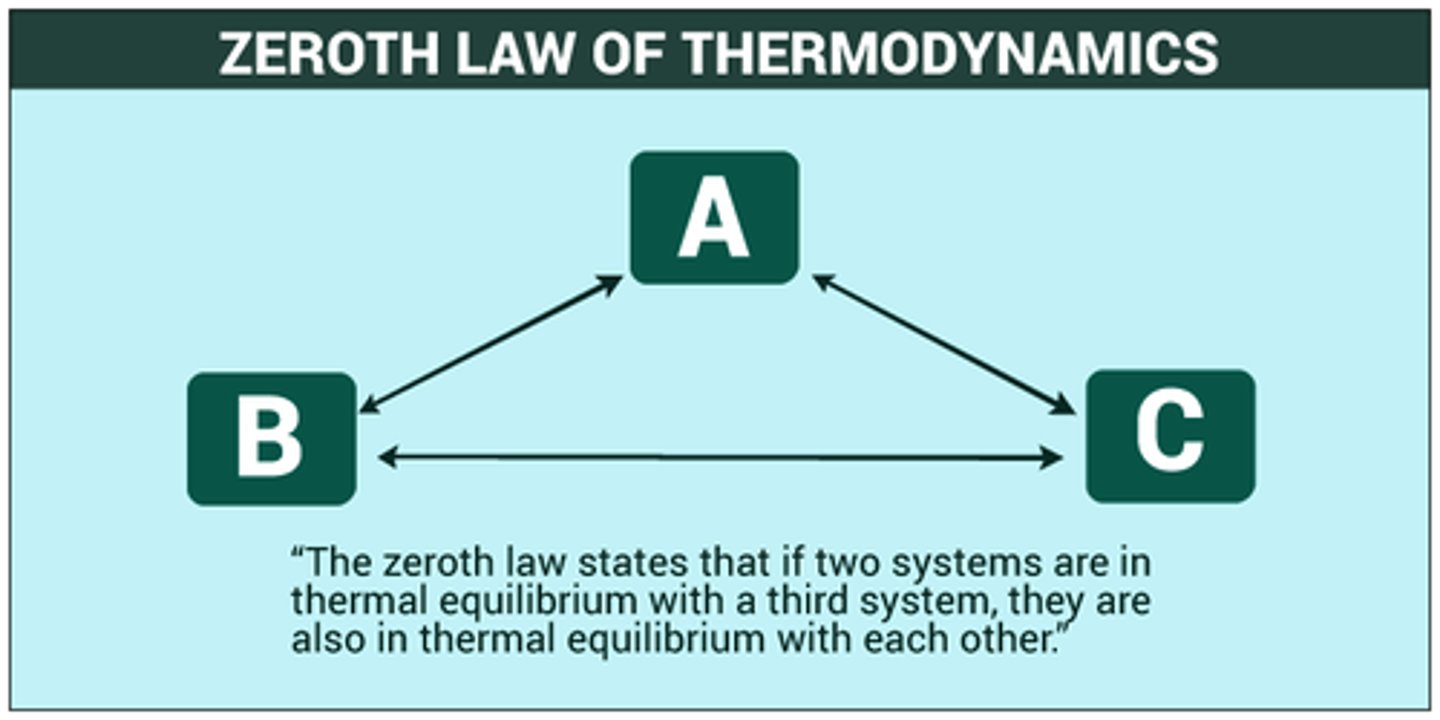
CRB The laws of thermodynamics dictate transformations of energy from one form to another. Which law of thermodynamics states that the entropy of a system approaches some constant value as its temperature approaches absolute zero?
(A) Zeroth law of thermodynamics
(B) First law of thermodynamics
(C) Second law of thermodynamics
(D) Third law of thermodynamics
(D) Third law of thermodynamics
The third law of thermodynamics states that the entropy of a system approaches some constant value as its temperature approaches absolute zero.

True or false? Hess's Law states that the energy change of a process is independent of the path that was taken to get there.
True. Hess's Law states that the energy change of a process is independent of the path that was taken to get there.
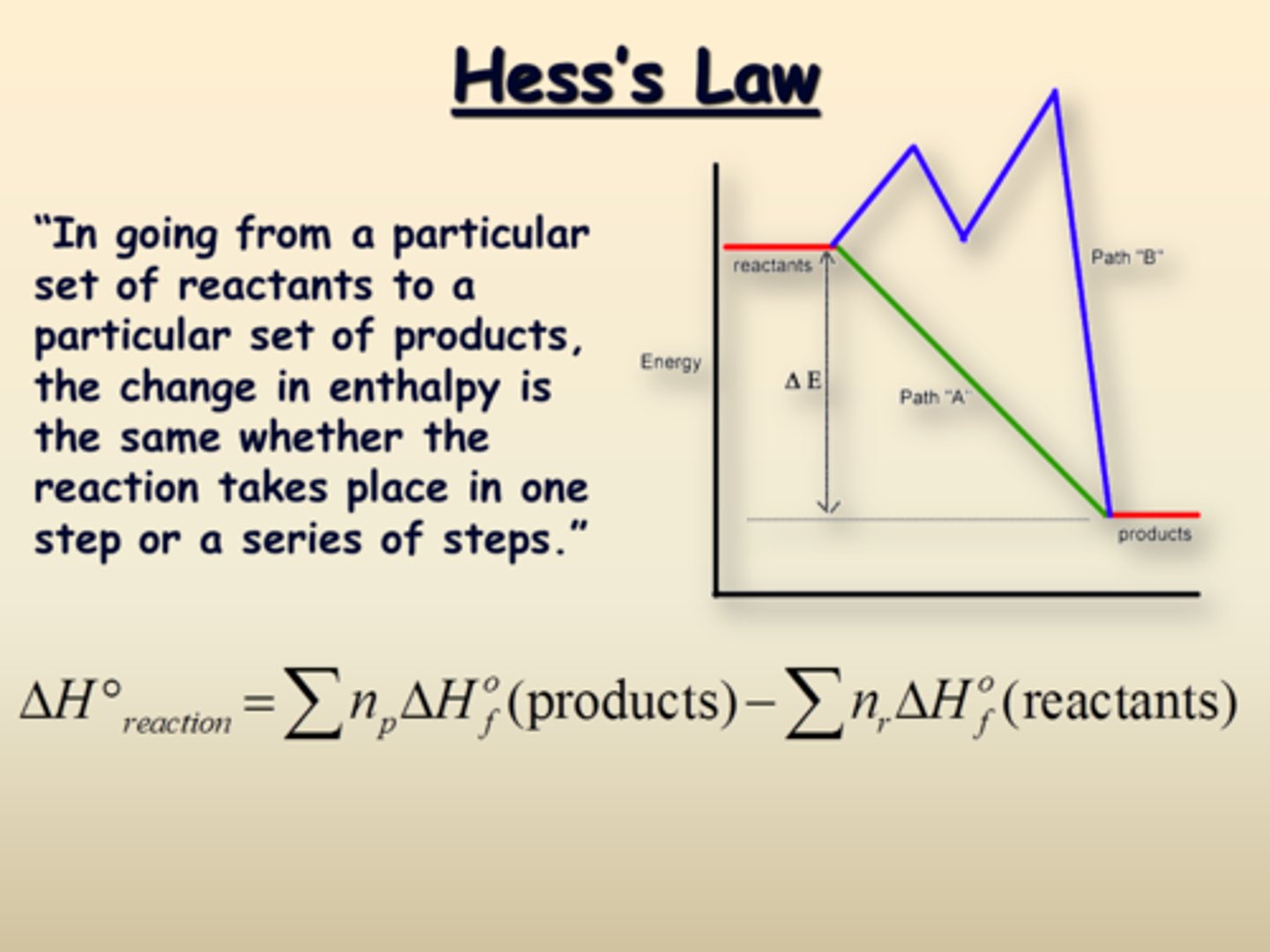
CRB Hess's Law is true for variables such as enthalpy and entropy because these are _________ variables.
(A) Process
(B) State
(C) Fixed
(D) Variable
(B) State
Hess's Law is true for variables such as enthalpy and entropy because these are state variables.
CRB Write out the formula used to calculate the heat of a reaction using the heats of formation of products and reactants.
Struggling to keep your MCAT equations straight? Simply conquer the 100 most important equations using Andrew's 100 Most Essential Equations Mastery Course @ https://mcatselfprep.com/course/andrews-equation-mastery-course/

CRB True or false? If a reaction is reversed, then the sign of ΔH is also reversed.
True. If a reaction is reversed, then the sign of ΔH is also reversed.
Calculate the change in enthalpy for the following reaction: 8 Al(s) + 3 Fe3O4(s) → 4 Al2O3(s) + 9 Fe(s)
ΔHf for Fe3O4(s) = -1120.9 kJ/mol
ΔHf for Al2O3(s) = -1669.8 kJ/mol
(A) -3,316.5 kJ
(B) -2,563.6 kJ
(C) -1,657.2 kJ
(D) -53.9 kJ
(A) -3316.5 kJ
For a detailed solution, see problem #1 here: https://www.thoughtco.com/heat-of-formation-example-problem-609556
Need help with MCAT math? Become an MCAT math wizard using Andrew's High-speed Math Mastery Course @ https://mcatselfprep.com/course/andrews-high-speed-math-mastery-course/
Calculate change in enthalpy for the ionization of Hydrogen Bromide: HBr(g) → H+(aq) + Br-(aq)
ΔHf Br-(aq) = -120.9 kJ
ΔHf HBr(g) = -36.2 kJ
(A) 157.1 kJ
(B) 84.7 kJ
(C) -84.7 kJ
(D) -157.1 kJ
(C) -84.7 kJ
For a detailed solution, see problem #2 here: https://www.thoughtco.com/heat-of-formation-example-problem-609556
Need help with MCAT math? Become an MCAT math wizard using Andrew's High-speed Math Mastery Course @ https://mcatselfprep.com/course/andrews-high-speed-math-mastery-course/
At a constant pressure, the change in enthalpy is equal to what?
(A) The temperature change
(B) The heat added to the system
(C) The molarity change
(D) The disorder added to the system
(B) The heat added to the system
At a constant pressure, the change in enthalpy is equal to the heat added to the system.
CRBTrue or false? A change in entropy for a reaction that is greater than 0 implies that the reaction went from a less ordered state to a more ordered state.
False. A change in entropy for a reaction that is greater than 0 implies that the reaction went from a more ordered state to a less ordered state. Entropy is a measure of DISorder.
CRB Which of the following processes would NOT result in a positive ΔS?
(A) Sublimation
(B) Evaporation
(C) Melting
(D) Freezing
(D) Freezing
An increase in ΔS would signify more microstates (or randomness) are possible, based on the definition of entropy. Only freezing will decrease the randomness of the arrangement of molecules of the previous choices.
CRB True or false? A reaction can be both exergonic and endothermic.
True. A reaction can be both exergonic (spontaneous) and endothermic (requiring heat). However, these reactions are quite rare, and must have a high increase in entropy. A common example would be an instant icepack!
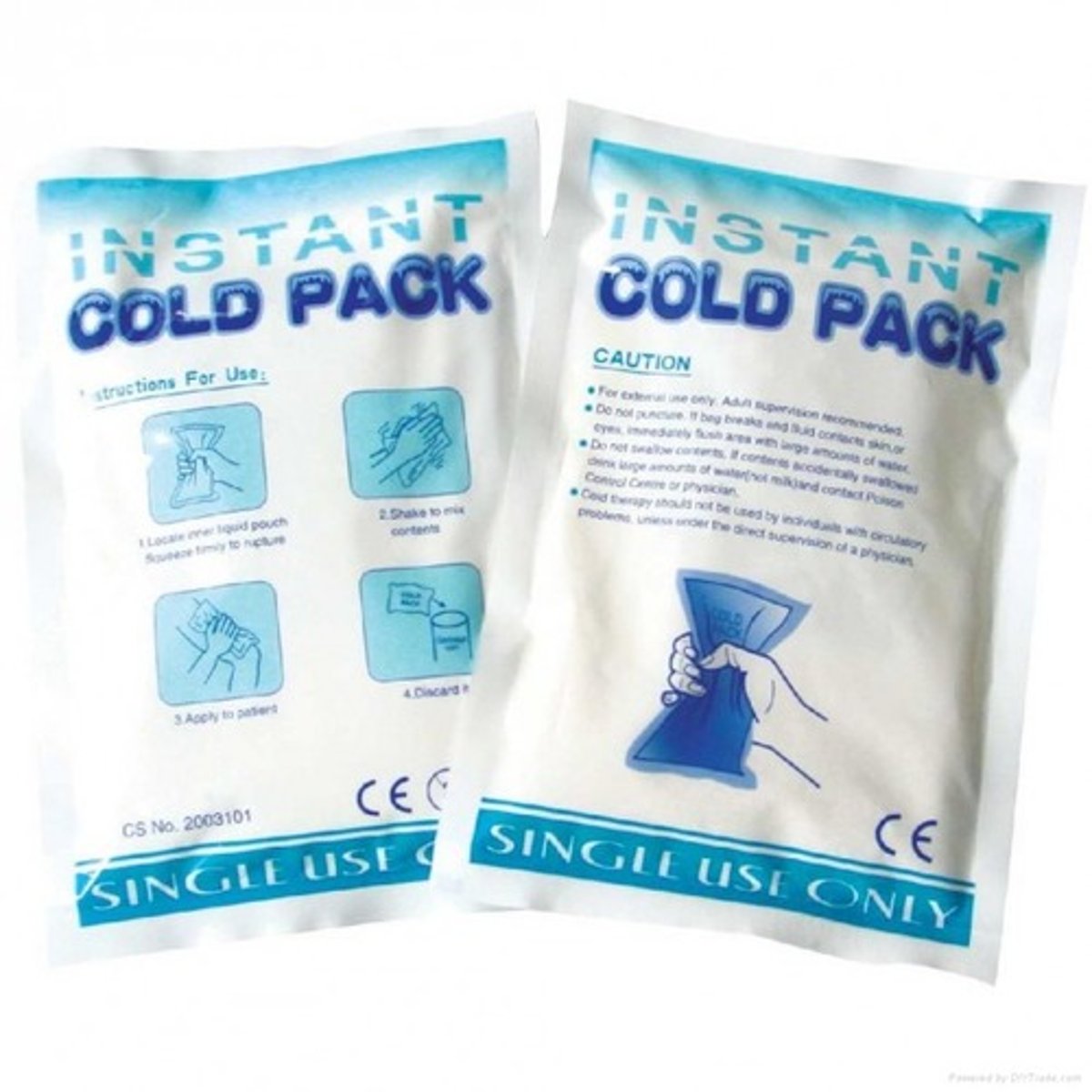
What is a reversible process vs. an irreversible process?
A reversible process is one in which a reaction can go forwards and backwards without losing any energy, right near equilibrium in an ideal world.
An irreversible process is one in which a reaction can't go forwards and backwards without losing any energy.
True or false? All spontaneous reactions are irreversible.
True. All spontaneous reactions are irreversible.
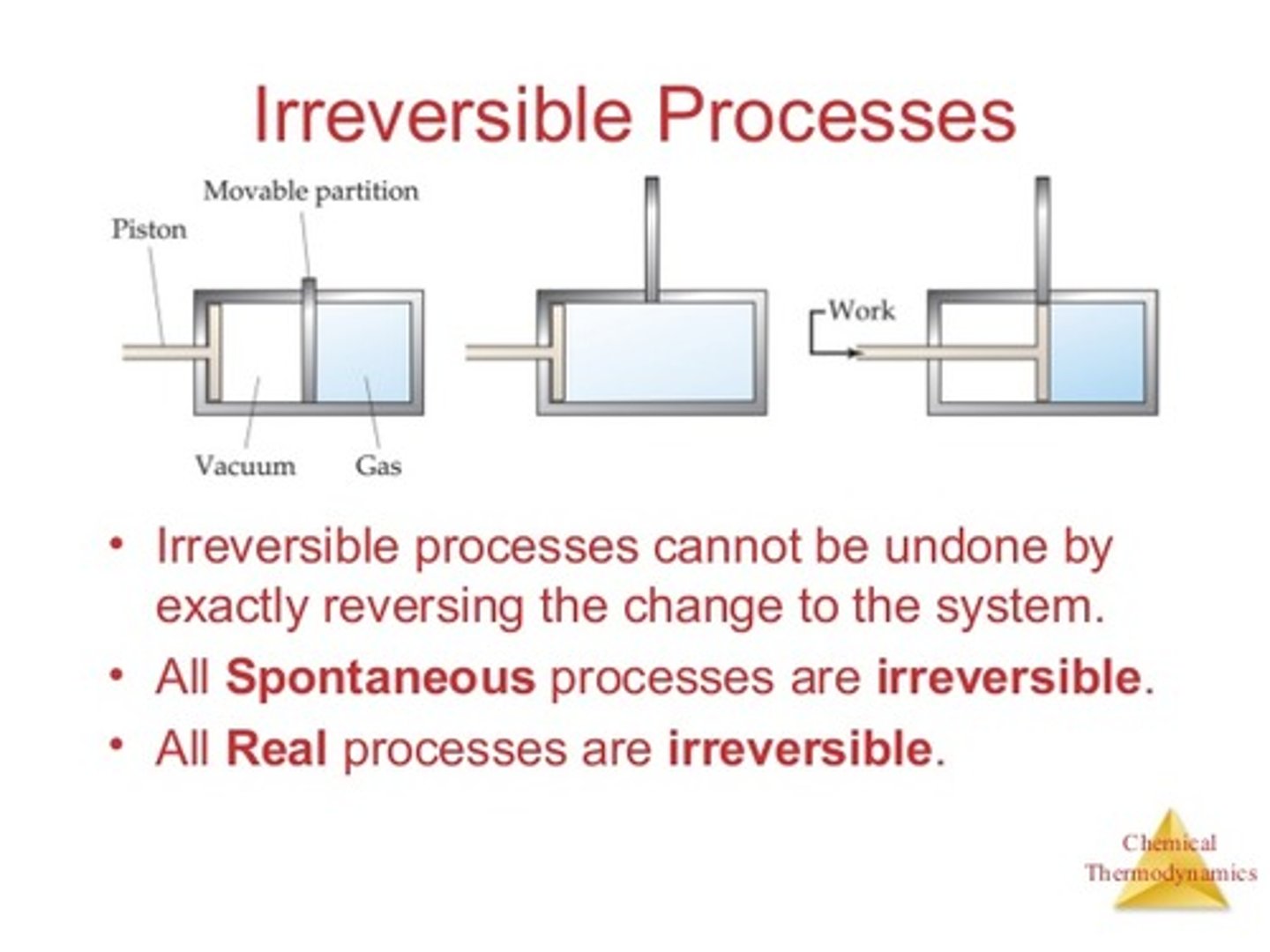
CRB True or false? If a reaction is spontaneous (thermodynamically favorable), then it must occur rapidly.
False. A reaction's kinetics and its thermodynamics are not necessarily related! Thermodynamics only predict if a reaction will be spontaneous, not its rate.
When more reactant is added into a reaction system at equilibrium, how does the system react to compensate for the stress that is applied according to Le Chatlier's principle?
The system reacts by favoring the shift towards the products to make more product in order to relieve the stress from the extra added reactants.
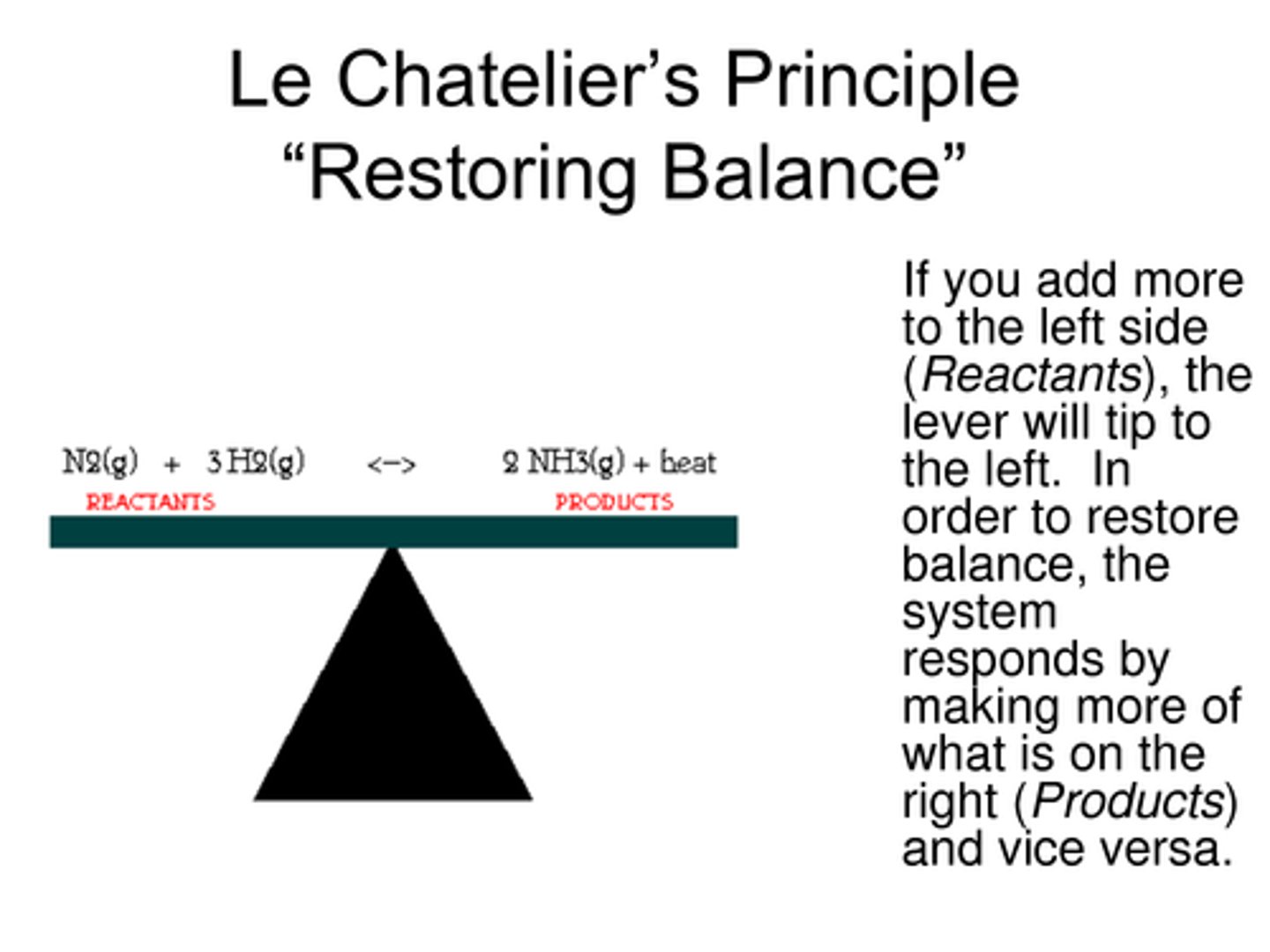
When the pressure on a gaseous reaction system at equilibrium is increased, the equilibrium will shift in which direction according to Le Chatlier's principle?
The equilibrium will favor the side with the least gas molecules.
For the following reaction, how will the reaction equilibrium be affected by an increase in temperature? H2O2(l) -> H2(g) + O2(g), delta H = 187 kJ/mol
Since delta H is a positive value it indicates that it is an endothermic reaction and the energy is on the reactant side because it is being absorbed. Thus an increase in the temperature of the system causes equilibrium to shift towards the right, towards the products H2(g) and O2(g) because this causes the reaction to shift away from the heat to balance out the reaction.
For the following reaction, how will the reaction equilibrium be affected by an increase in volume?
H2O2(l) = H2(g) + O2(g)
The reaction will shift to the right, thus increasing the products. H2O2 is a liquid, so it cannot change its volume. H2 (g) and O2 (g) can both take advantage of the increased volume by expanding and spreading out the molecules. Thus an increase in H2O2 will shift the reaction to the right towards H2 (g) and O2 (g).
For the following reaction, how will the reaction equilibrium be affected by the removal of Oxygen gas? H2O2(l) <--> H2(g) + O2(g)
The removal of Oxygen gas will shift the reaction towards the right, favoring the products H2 (g) and O2 (g). Removing products will form more products, and is commonly taken advantage of in biochemistry!
If volume is decreased for the following reaction system at equilibrium, what color will you expect the mixture to become?
N2O4(g) (colorless) + heat = 2 NO2(g) (pink)
You would expect the mixture to become more colorless because there are less gas molecules on that side of the equation. Shifting the equilibrium to the side with less gas molecules will relieve the stress of decreasing volume (which inherently means increasing pressure).
What happens to the reaction when the temperature is decreased on the following system at equilibrium:
2 HCl(aq) + Mg(s) = MgCl2(aq) + H2(g) + heat
In order to restore equilibrium, the reaction shifts right towards products MgCl2(aq) and H(2).
The process of dissolving Na2SO4 in water is known to be exothermic:
Na2SO4(s) = 2 Na + (aq) + SO42 - (aq) + heat
If the temperature of the solution is decreased, Na2SO4 becomes:
(A) Less soluble
(B) No change in solubility occurs
(C) More soluble
(D) None of the above
(C) More soluble
If the temperature of the solution is decreased, Na2SO4 becomes more soluble. This is because heat is being taken away which shifts the reaction to the right. However, to shift the reaction to the right, Na2SO4 (s) must be more soluble.
CRB Equilibrium is a state of dynamic molecular behavior, meaning that:
(A) Reactants continually turn into products at a progressively slower rate
(B) Products continually turn into reactants at a progressively faster rate
(C) Reactants turn into products and products turn into reactants at different rates
(D) Reactants turn into products and products turn into reactants at equal rates
(D) Reactants turn into products and products turn into reactants at equal rates
Equilibrium is a state of dynamic molecular behavior, meaning that reactants turn into products and products turn into reactants at equal rates.